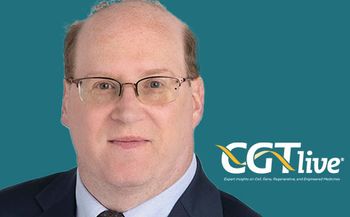
John Finn, PhD, on the Potential of Programmable Genomic Integration
The chief scientific officer of Tome Biosciences discussed the company’s technologies in the context of integrative gene therapy and cell therapy.
“[T]he concept is very simple. A patient has a broken gene. Now we can put a healthy copy of that gene in the right location, in the right cell. What this means is that not only will that gene now be regulated the way that normal gene was, and so it will only be expressed at the right time and the right amount, and not too high, not too low—but it also means that we are essentially agnostic to what mutation that patient has.”
Over the years, a number of companies and academic institutions have experimented with a wide variety of genomic medicine technologies. One common approach is gene insertion, which is most commonly carried out with a viral vector. In the case of ex vivo cell therapy, lentiviral vectors are often used, and in the case of in vivo gene therapy products, adeno-associated viral vectors are commonly used. Although these methods have shown some success, they come with a number of drawbacks, such as the relative randomness of where the transgene is inserted into the genome, which can hinder efficacy and pose potential safety risks. Another modality of growing interest is gene editing, which can be carried out with a number of methods, such as CRISPR-based editing. Although CRISPR-based editing is more precise than the aforementioned viral vector methodologies, it requires a double-strand break, which may also carry potential safety risks. As such, companies and institutions are continuing work to develop new methods of altering patients’ genomes for therapeutic purposes.
One company engaged in this pursuit is Tome Biosciences, which is developing 2 technologies that fall under the umbrella of programmable genomic integration (PGI). Tome presented preclinical data related to its technologies at
REFERENCES
1. Tome Biosciences presented data on its programmable genomic integration technologies at ASGCT. News release. Tome Biosciences, Inc. May 10, 2024. Accessed July 12, 2024. https://tome.bio/news/tome-biosciences-presented-data-on-its-programmable-genomic-integration-technologies-at-asgct/
Newsletter
Stay at the forefront of cutting-edge science with CGT—your direct line to expert insights, breakthrough data, and real-time coverage of the latest advancements in cell and gene therapy.

















































